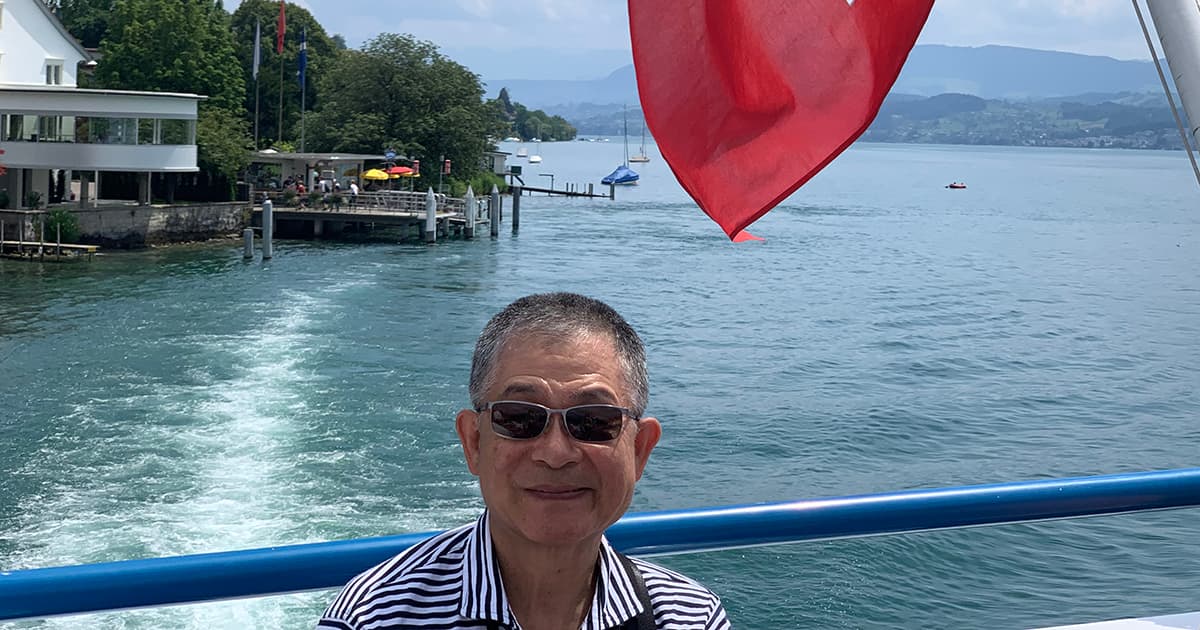
Traveling during the holidays can sometimes feel like taking your life – or at least your sanity – in your own hands. Think of the iconic movie “Planes, Trains and Automobiles,” in which the short-tempered Steve Martin enlists the bumbling but good-hearted John Candy in finding a way home for Thanksgiving after a missed flight.
With the pandemic adding an entirely new layer of complexity to holiday travel, some of the headaches encountered in the film may not be that far-fetched.
Here to help is College of Public Health and Human Sciences professor, global health thought leader and much-quoted media source Chunhuei Chi, who shares his expert advice on traveling as safely as possible.
“The whole country is at a high peak of the pandemic, so that’s really, really terrible,” he says. “It has to be kept in mind that most places are high risk. The safest thing to do for yourself and others is to stay home. But we also have to balance the mental health effects of a long pandemic.”
He himself designed a way to safely see his new grandson and family in Portland. In order to gather in the same household, with no masks and no distancing, he and his Portland family self-quarantine for 14 days, meaning they don’t have close personal contact with others and only go out for groceries wearing a face mask. He also disinfects groceries and showers upon returning home.
“I have to emphasize that nothing is 100 percent safe,” he says. “The holidays are trickier because you have family gatherings involving multiple households. Each family member from each household should quarantine for 14 days prior to gathering, and anyone who cannot accomplish that task should not participate because that brings a huge risk to the rest of the family. I have observed since the weather turned colder a surge of new infections caused by friend-family gatherings. If you’re planning to gather, size down your party and the number of guests and follow the governor’s orders.
In addition, if you have been exposed to a positive case or tested positive, even though you don’t have symptoms, or have very mild symptoms, Chunhuei says you should self-quarantine for 14 days, because the majority of virus transmission is carried out by those with mild or no symptoms of disease.
“Only about 20 percent of people who are infected will have moderate to severe symptoms. And those who have really severe symptoms usually are less than 10 percent. People mistakenly think, ‘If I don’t have symptoms or have mild symptoms, I’m not contagious, right?’ Unfortunately, that’s dead wrong.”
If you decide to gather, the next decision is how to do it safely. When driving, continue to follow all hygiene practices and plan your trip so that you stay in locations with low rates of infection. If flying, your greatest risk likely isn’t in the air, but rather on the ground.
“Airlines as a whole have done a good job with disinfection and other measures,” Chunhuei says. “Most airplanes have good air circulation and use HEPA filters capable of filtering out virus. Still, a face mask is very important throughout the entire flight. The challenge is keeping proper spacing when boarding and disembarking from the plane.”
At your destination, open the windows, disinfect surfaces and let the air circulate, he says, and avoid dining indoors.
A frequent traveler who makes at least a couple of international flights each year, Chunhuei is anxious to use his passport again, but says travel resuming to a pre-pandemic state won’t happen overnight.
“The conditions have to be better, and travelers need to feel secure, so both things need to happen,” he says. “I’m hoping maybe when vaccinations begin that travel will resume slowly, maybe in the spring.”
Travel checklist
- Check the numbers of cases, deaths and more of the place you’re visiting. If international, assess the quality of health care facilities, the capability of the destination to treat visitors and the site’s recovery and fatality rates.
- Learn how the pandemic has affected daily life in your destination. Talk with your travel provider about your plans and if they’re still feasible.
- Know how the country you’re visiting will screen you and what costs may be involved. This could involve a coronavirus test, proof of a recent negative test or mandatory quarantine. Many Asian nations now require Americans to provide a PCR test with negative results within 72 hours of departure, as does Hawaii with visitors from the continental United States.
- Keep in mind that you might not be able to return to the United States for a period of time, your trip could be disrupted or you may be quarantined upon your return.
- Remember to avoid crowds and plan as many outside activities as possible.
- Check airline policies on passenger spacing, mask requirements and disinfection procedures.
- If you or someone you’re visiting has chronic or respiratory conditions and is at risk for severe illness from COVID-19, consider staying home.
- Check all cancellation policies and consider travel insurance. Flight cancellations by airlines have become the norm during the pandemic.
- Check the CDC website for more travel information and the U.S. State Department’s website for COVID-19 country information.